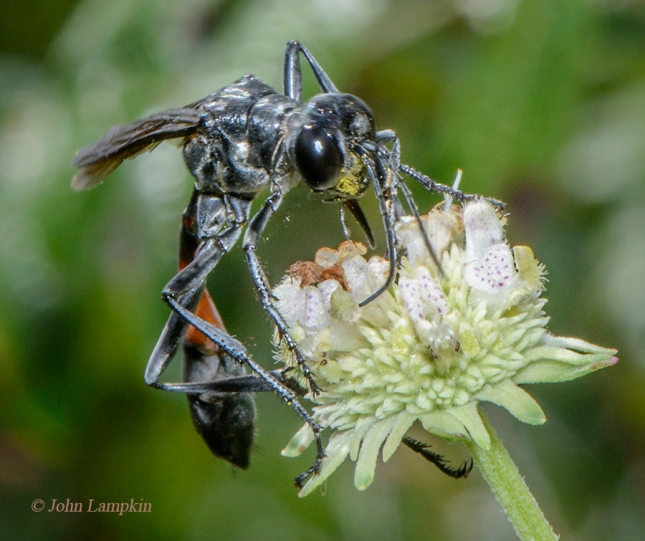
Wasp visiting Hyptis alata, courtesy of John Lampkin
Hyptis alata
(Hyptis comes from Greek for “turned back,” maybe in reference to the way the lower petal lobe repositions after pollination. Alata means “winged,” apparently describing the broadened leaf stalk.)
Lamiaceae (Mint Family)
Today was as heavenly as weather gets, deep blue sky, breeze, perfect temperature for penetrating the Kiplinger Nature Preserve swamp.
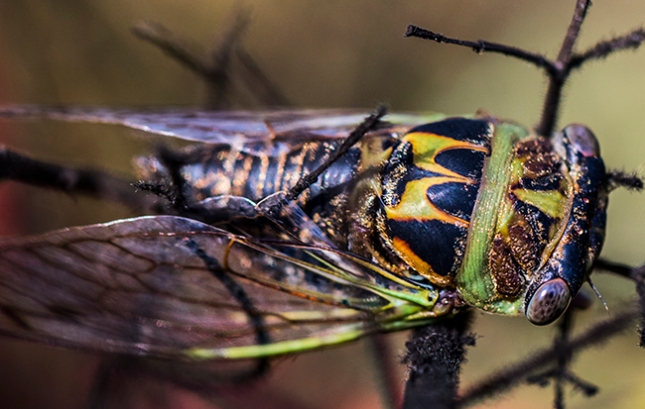
Swamp creature
Not on a boardwalk, nor on a trail, I mean climbing over dead trees tangled in vines. We explored deeper into the vast Kiplinger jungles than any mortal human, into the belly of the beast. Not unrewarded though, along the way seeing Dahoon Hollies more laden with red berries than with green leaves, Royal Ferns a dozen feet tall, trees festive with hundreds of big pink climbing Carolina Asters, a pair of Hooded Mergansers on the marshy pond, 15-foot gators drooling for human flesh, vipers in every shadow, and today’s mint, deep in the shade, although vastly happier in a sunny marsh.
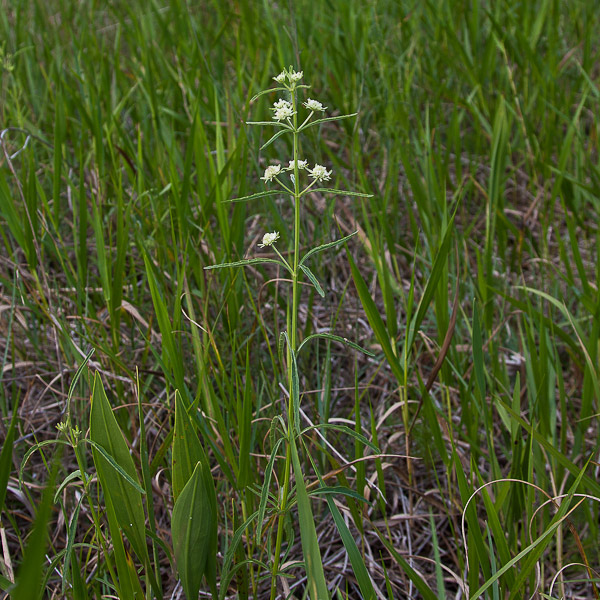
Hyptis alata by John Bradford
Hyptis alata populates two different homelands with a massive gap between, one subpopulation in the southern U.S. and associated Caribbean, and another subpopulation in S. Brazil, Paraguay, and Argentina. The two existed as separate species until joyous unification in 1983.
The flowers are odd in this and related species. The crowded blossoms are in tight clustered head. A visiting pollinator can service multiple flowers in the same head, although only a fraction of the blossoms are open at once, compelling pollinators to move from plant to plant. The recorded visitors include bees, butterflies, wasps (see shots by John Lampkin), and hummingbirds. And I’ll bet certain types of flies come along too.
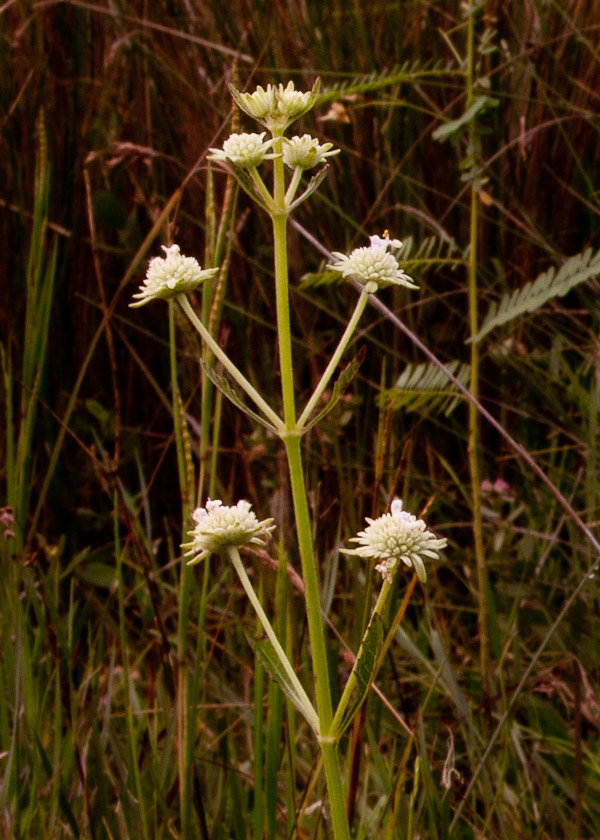
By JB
The pollination mechanism is explosive and weird. The flower is tube-shaped with five lobes at the rim of the tube. Four of the lobes are “normal,” the fifth lobe lies at the doormat entrance to the tube on the path to nectar within. This odd shoe-shaped lobe houses the four stamens (pollen-producing organs).
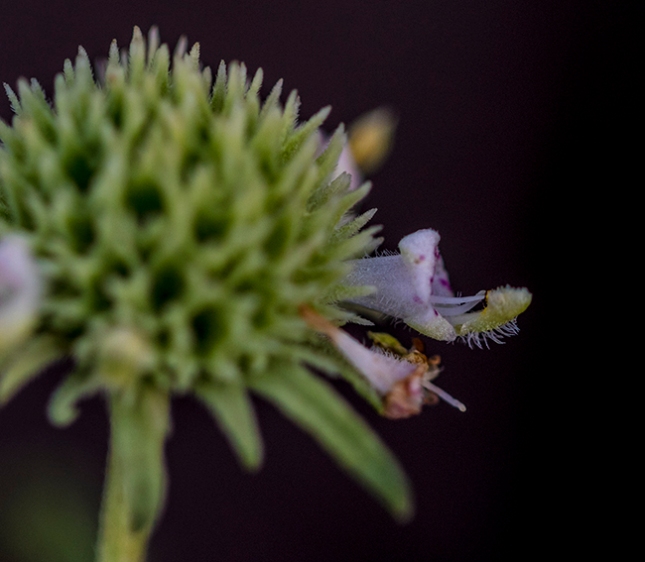
The 5th lobe yellowish and hairy, jutting to the right, not yet popped.
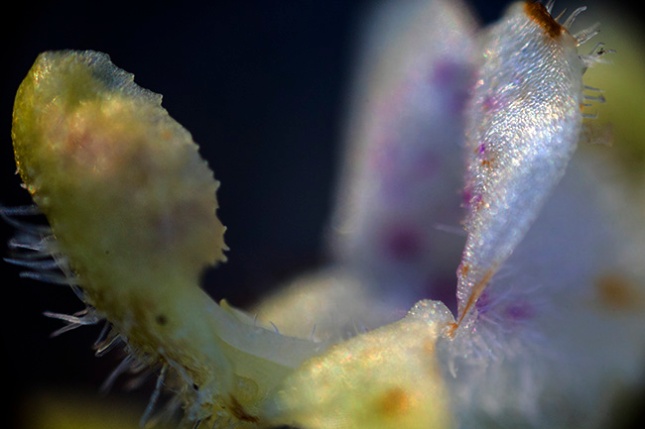
Fifth lobed unpopped closeup
As the stamens grow they build up tension pushing against the lobe surrounding them, like toes in a tight shoe. When a landing pollinator touches the loaded lobe, the stamens pop up and impact the visitor from below, depositing pollen on its underside. Surprise! The now-empty lobe soon dangles down dejected. The stamens likewise, their pop-up job done, bend aside to let the style (pollen-receiving organ) take over, converting the flower from functionally male to functionally female.
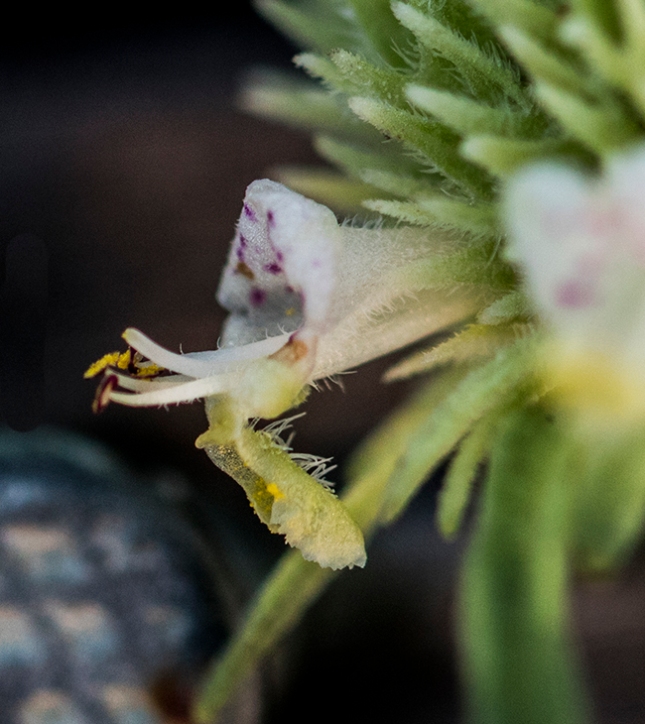
The empty shoe hanging down, the freed stamens and style above it.
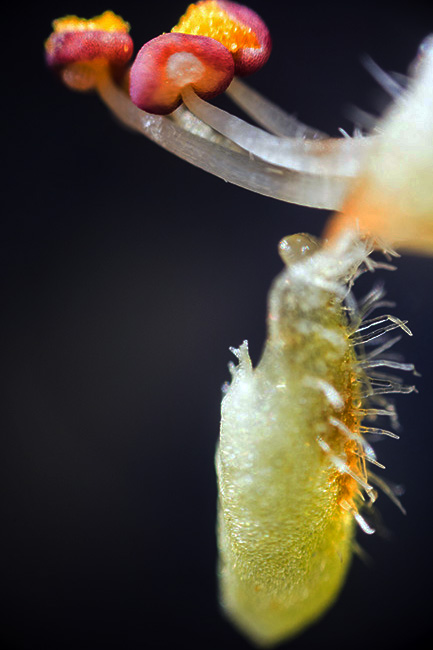
The hairy empty shoe lobe below the stamens, closeup
Normally biochemistry is too boring for a hopefully fun wildflower blog, but in Hyptis the biochemical story is so related to real-people experience let’s go there. We’re talking about modern chemotherapy drugs.
As prelude, a quick lesson from my “Concepts of Biology” class. The DNA double helix, our genetic material ya-know, is such a complex twisted stringy molecule it doesn’t take much imagination to wonder how it functions without tangling. Answer: DNA does tangle in ways that would be fatal if not for enzymes that unsnarl the snarls. Enzymes known as topoisomerases snip, untangle, and then repair the tangled DNA. If you have a snarled chain you could fix it if you cut links out, then separate and straighten the segments, and then reattach the fixed segments by forging new links. The ability to untangle and fix DNA is especially critical at the time of cell division.
Prevent the untangling and you have a lethal poisons called topoisomerase inhibitors, with pharmaceutical examples being etopside (Toposar), teniposide (Vumon), and etopofos (Etophos). They suppress cancer because a growing tumor needs rapid cell divisions more than the rest of our body does, where of course we do experience limited toxic side-effects.
All three of the drugs listed above are based on the natural botanical toxin podophyllotoxin, originally from the genus Podophyllum (May Apples). In addition to cancer drugs, podophyllotoxin under various brand names kills warts more effectively than spunkwater. This cytotoxin is scattered in the plant world, with only a few producer species known so far, including a species of Hyptis. If discovered in one Hyptis, then probably awaiting discovery in others, including plausibly our own poorly studied Clustered Bushmint.
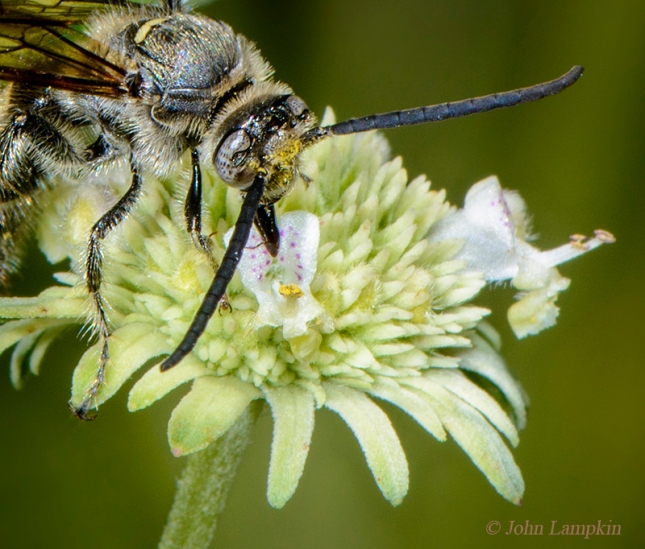
By John Lampkin. The traps are sprung.
Marlene Semple
December 3, 2016 at 7:20 am
Clustered Bushmint – a wonderful post. Thank you.
George Rogers
December 3, 2016 at 7:59 am
Thanks Marlene!
Linda Cooper
December 3, 2016 at 7:18 pm
I am enjoying your posts and learning from your posts too George. Will share on my Facebook page.
George Rogers
December 4, 2016 at 7:06 am
Linda, Thank you so much!
FlowerAlley
December 4, 2016 at 5:36 pm
Great biology lesson. I did have to look up one term…spunkwater.